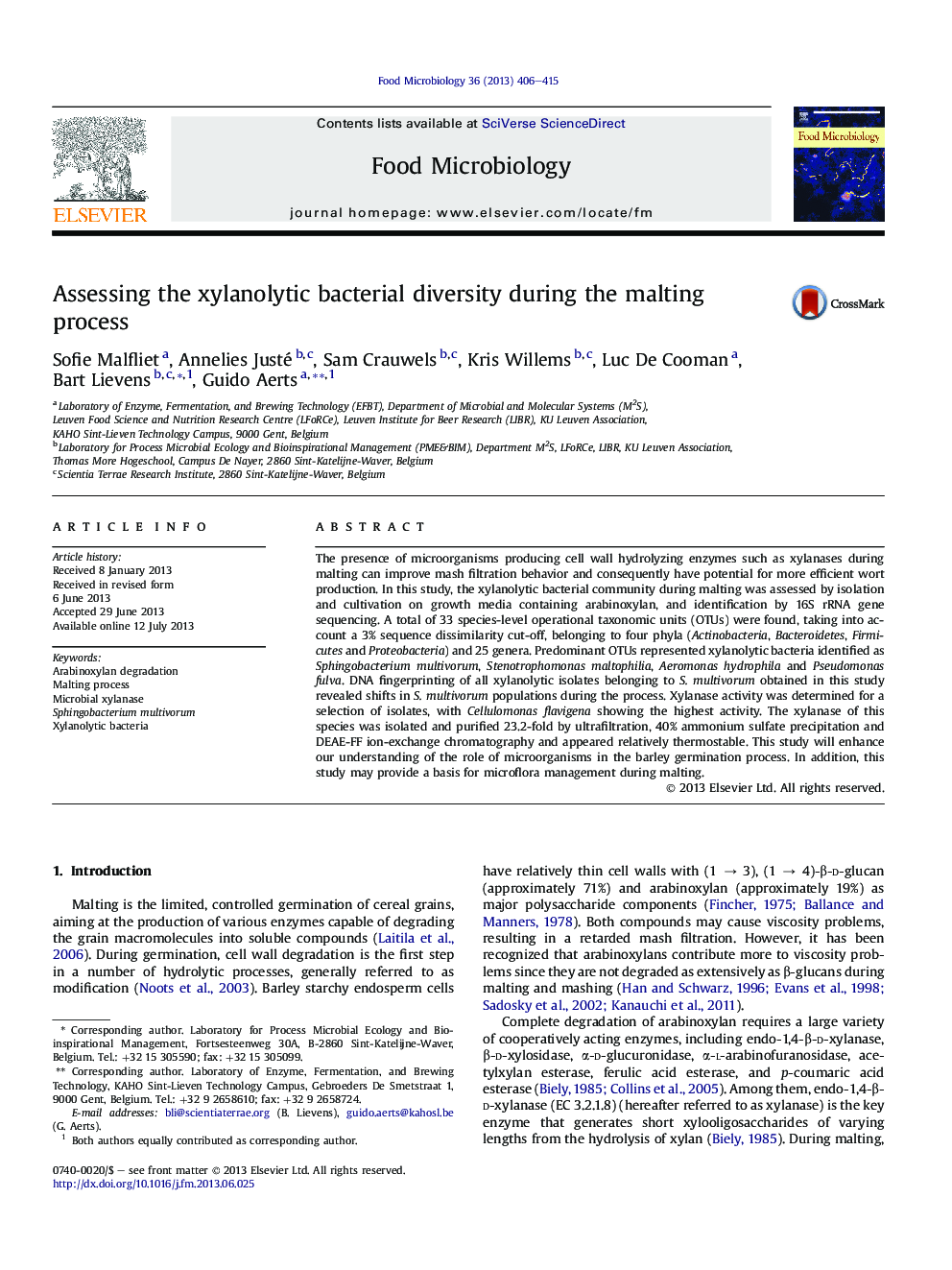| Article ID | Journal | Published Year | Pages | File Type |
|---|---|---|---|---|
| 6288799 | Food Microbiology | 2013 | 10 Pages |
Abstract
The presence of microorganisms producing cell wall hydrolyzing enzymes such as xylanases during malting can improve mash filtration behavior and consequently have potential for more efficient wort production. In this study, the xylanolytic bacterial community during malting was assessed by isolation and cultivation on growth media containing arabinoxylan, and identification by 16S rRNA gene sequencing. A total of 33 species-level operational taxonomic units (OTUs) were found, taking into account a 3% sequence dissimilarity cut-off, belonging to four phyla (Actinobacteria, Bacteroidetes, Firmicutes and Proteobacteria) and 25 genera. Predominant OTUs represented xylanolytic bacteria identified as Sphingobacterium multivorum, Stenotrophomonas maltophilia, Aeromonas hydrophila and Pseudomonas fulva. DNA fingerprinting of all xylanolytic isolates belonging to S. multivorum obtained in this study revealed shifts in S. multivorum populations during the process. Xylanase activity was determined for a selection of isolates, with Cellulomonas flavigena showing the highest activity. The xylanase of this species was isolated and purified 23.2-fold by ultrafiltration, 40% ammonium sulfate precipitation and DEAE-FF ion-exchange chromatography and appeared relatively thermostable. This study will enhance our understanding of the role of microorganisms in the barley germination process. In addition, this study may provide a basis for microflora management during malting.
Related Topics
Life Sciences
Agricultural and Biological Sciences
Food Science
Authors
Sofie Malfliet, Annelies Justé, Sam Crauwels, Kris Willems, Luc De Cooman, Bart Lievens, Guido Aerts,
